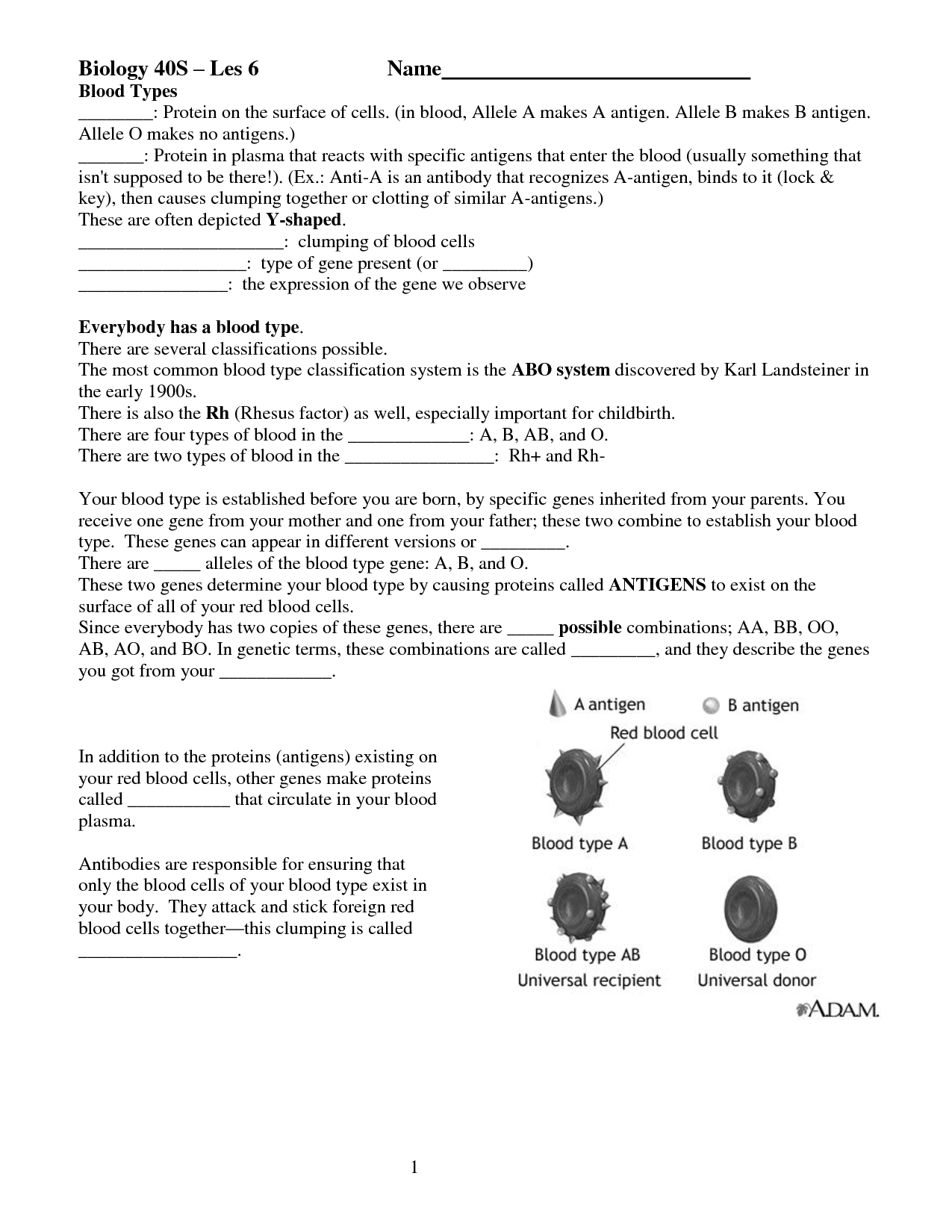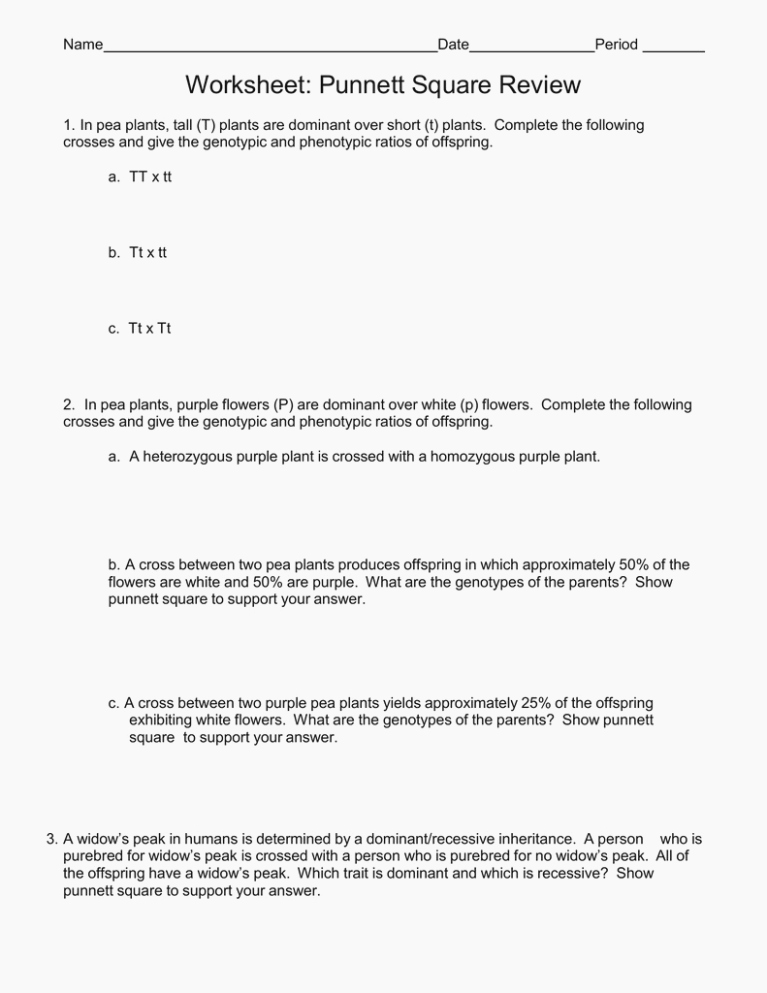Have you ever wondered why you have the same blood type as your mom or why your sibling has a completely different one? The answer lies in the fascinating world of genetics and inheritance. Blood type, like many other traits, is passed down from parents to their children through specific genes. Understanding these inheritance patterns can be a fun and insightful journey into the complexities of our biology.

Image: www.englishworksheet.my.id
Recently, while helping my niece with her biology homework, I was struck by how much she struggled to grasp the concept of blood type inheritance. The worksheet seemed daunting, with its Punnett squares and complex combinations of alleles. But after breaking it down step-by-step, using simple analogies and visual aids, I saw a lightbulb moment in her eyes. This experience sparked my desire to create a resource that demystifies blood type inheritance and makes it accessible for everyone.
Decoding the Language of Blood Types
Blood type, a crucial aspect of our healthcare system, is determined by the presence or absence of certain antigens on the surface of red blood cells. These antigens, essentially molecular markers, are encoded by genes. Humans inherit two copies of each gene, one from each parent. These copies are called alleles.
Let’s break down the basics. There are three major alleles that determine blood type: A, B, and O. Allele A codes for the A antigen, allele B codes for the B antigen, and allele O doesn’t code for any antigen. The combinations of these alleles lead to the four main blood types:
- Type A: Individuals with either two A alleles (AA) or one A and one O allele (AO).
- Type B: Individuals with either two B alleles (BB) or one B and one O allele (BO).
- Type AB: Individuals with one A and one B allele (AB).
- Type O: Individuals with two O alleles (OO).
Dominance and Recessiveness: The Key to Understanding Blood Type Inheritance
In blood type inheritance, we see a concept called dominance. Allele A and B are dominant over O, meaning if an individual has one A or B allele, that antigen will be expressed. Allele O is recessive, meaning it only gets expressed if an individual has two O alleles.
This dominance pattern is why individuals with an AO genotype express blood type A, and individuals with BO genotype express blood type B, as the presence of A or B masks the expression of the O allele. But the O allele is still present and can be passed down to their offspring.
Mastering Blood Type Inheritance: A Step-by-Step Approach
Understanding inheritance patterns can be simplified using a visual tool called a Punnett square. By understanding these patterns, you can predict the potential blood types of children based on the blood types of their parents. Let’s explore some common scenarios:

Image: chessmuseum.org
Scenario 1: Both Parents are Type A
If both parents are Type A, they can have either AA or AO genotypes. In this case, the potential blood types for their children are:
- Type A: AA, AO
- Type O: OO
Scenario 2: One Parent is Type A and the Other is Type B
When one parent is Type A (either AA or AO) and the other is Type B (either BB or BO), their children can have the following blood types:
- Type A: AA, AO
- Type B: BB, BO
- Type AB: AB
- Type O: OO
Scenario 3: One Parent is Type AB and the Other is Type O
When one parent is Type AB and the other is Type O (OO), their children can have these blood types:
- Type A: AO
- Type B: BO
- Type AB: AB
Scenario 4: Both Parents are Type O
When both parents are Type O (OO), their children can only be Type O (OO).
These examples demonstrate the variety of possible blood types for children depending on their parents’ genotypes. By understanding these inheritance patterns, individuals can gain valuable insights into their own family history and potential health risks.
Tips and Expert Advice for Navigating Blood Type Inheritance Worksheets
To successfully tackle blood type inheritance worksheets, consider these tips:
1. Familiarize yourself with the basic concepts of blood types and alleles.
Before diving into inheritance patterns, ensure you have a solid understanding of the different blood types, the alleles responsible for them, and the concept of dominance and recessiveness. This foundation will make the process of predicting possible blood types much easier.
2. Practice with Punnett squares.
Punnett squares are visually powerful tools for visualizing the possible combinations of alleles passed down from parents to their children. Practice completing Punnett squares with different parental blood type combinations to solidify your understanding. You can find numerous resources online and in textbooks that provide practice exercises to help you master this technique.
3. Don’t hesitate to ask for help.
If you encounter any difficulties understanding the concepts or using Punnett squares, don’t hesitate to seek clarification from your teacher, tutor, or any available resources. There are many online forums, study groups, and websites dedicated to helping students understand genetics. Don’t be afraid to ask questions and collaborate with others.
Frequently Asked Questions (FAQs) about Blood Type and Inheritance
- Q: Can blood type change throughout a person’s life?
A: No, blood type is determined by your genes and remains constant throughout your life.
- Q: What is the significance of blood type in medicine and healthcare?
A: Blood type plays a vital role in blood transfusions, as incompatible blood types can lead to serious complications. Understanding blood type is crucial for safe and effective blood donations and transfusions. It also has implications for organ transplantation.
- Q: Are there any other factors besides genetics that can influence blood type?
A: No, your genetic makeup is the sole determinant of your blood type. There are no environmental factors or lifestyle choices that can alter your blood type.
- Q: Can I determine my child’s blood type before they’re born?
A: Yes, non-invasive prenatal testing (NIPT) can sometimes help determine a baby’s blood type before birth. However, it’s important to remember that these tests are not always conclusive and should be interpreted by healthcare professionals.
- Q: Can I use blood type to determine my biological father?
A: While blood type can provide some information about potential fathers, it’s not a foolproof method for determining paternity. Blood type analysis can exclude certain individuals as potential fathers, but it can not definitively confirm a father-child relationship. More reliable methods for paternity testing include DNA analysis.
Blood Type And Inheritance Worksheet Answers
Conclusion: Embracing the Power of Genetics
Understanding blood type inheritance is not just about memorizing blood type combinations; it’s about unlocking the secrets of your genes and appreciating the complex interplay of heredity. By grasping these concepts, you can gain valuable insights into your family history, potential health risks, and the fascinating world of genetics.
Have you found this article helpful in understanding blood type inheritance?





